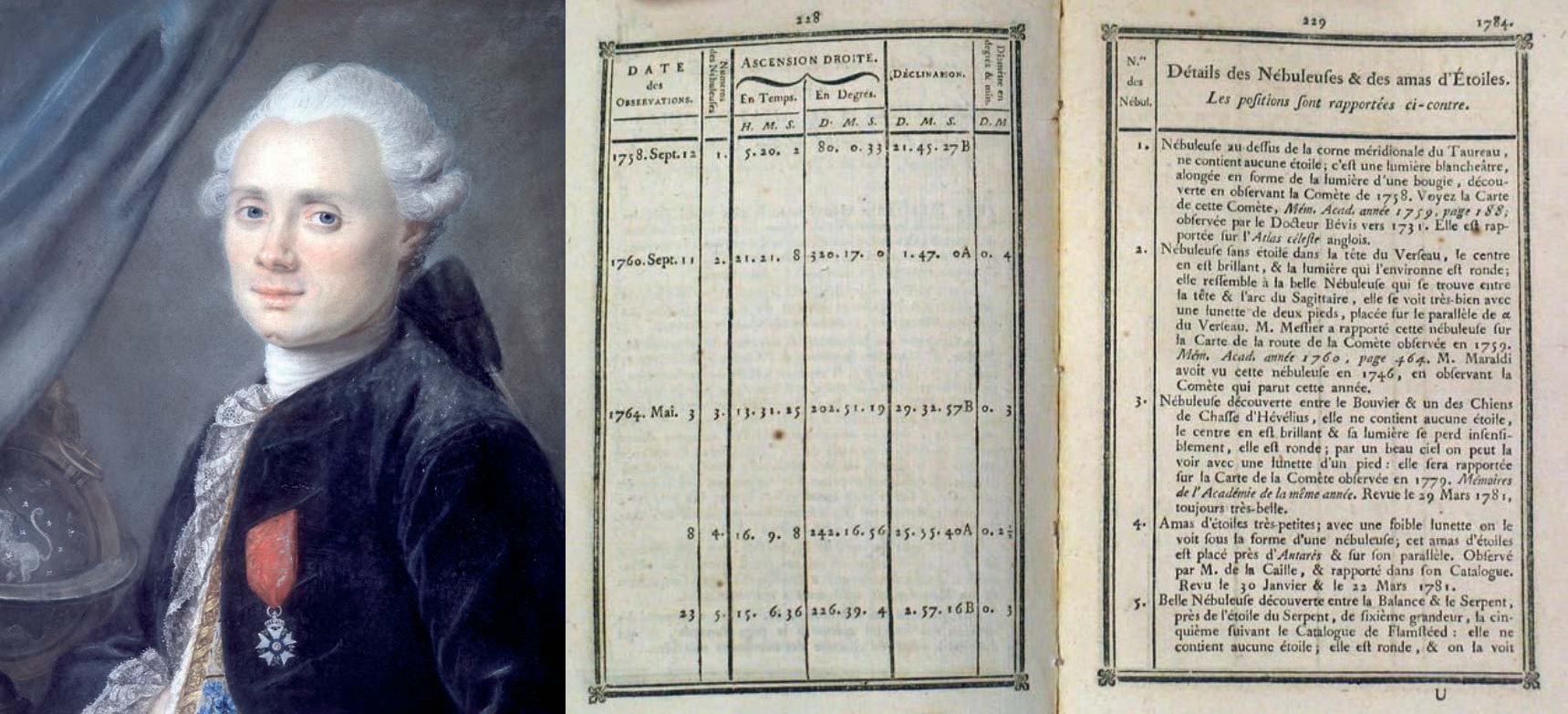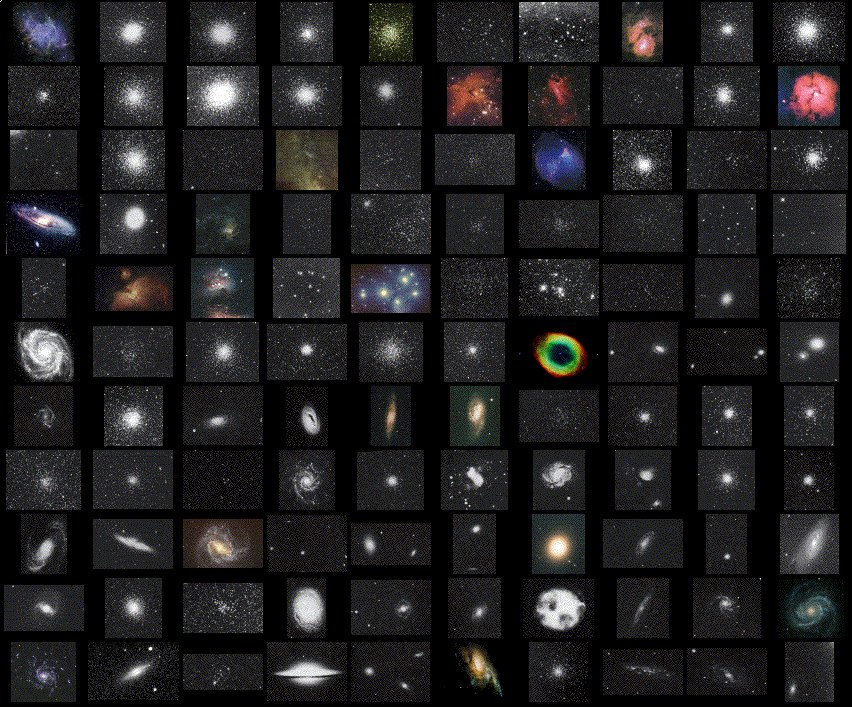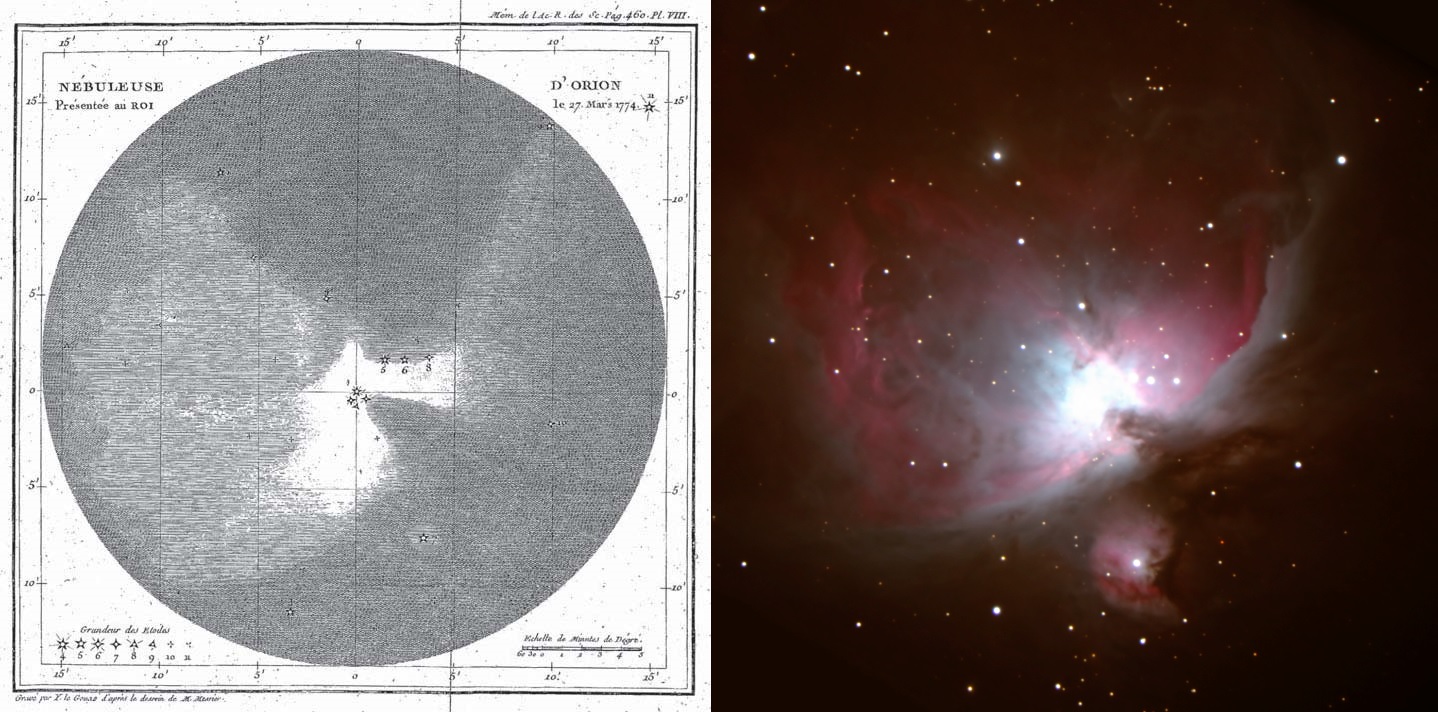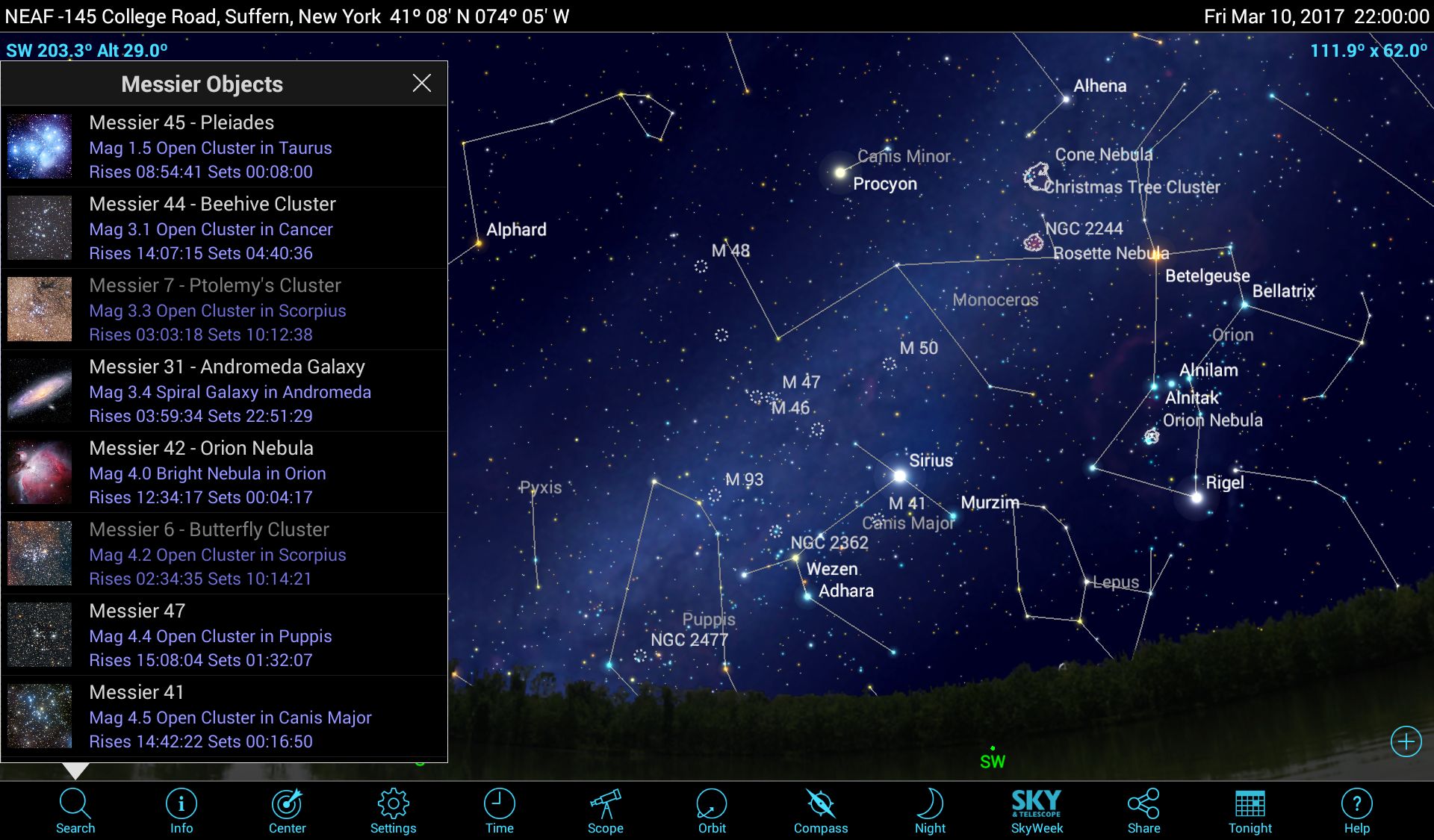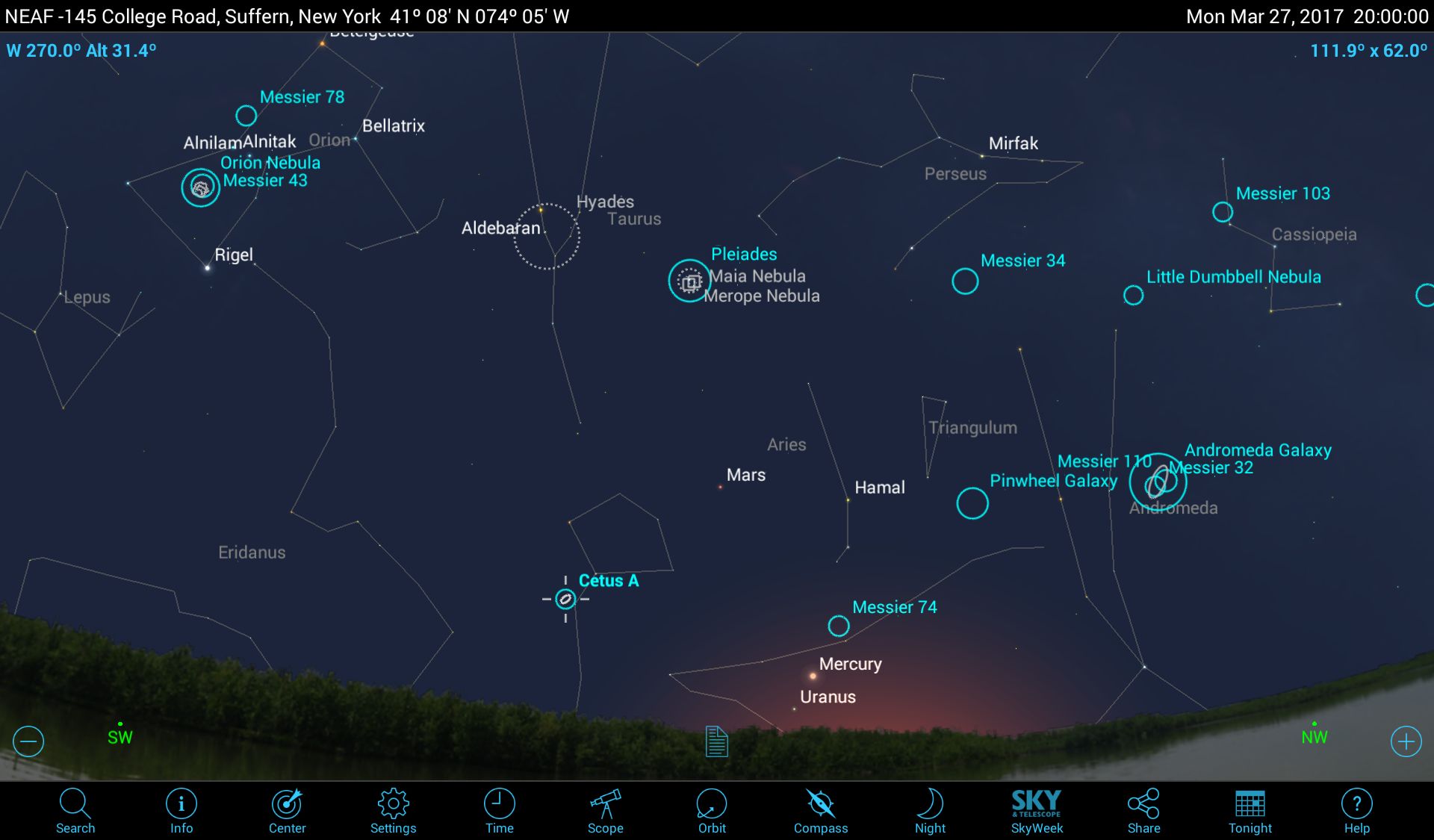Seeing the Treasures of Messier's List with Mobile Astronomy Apps
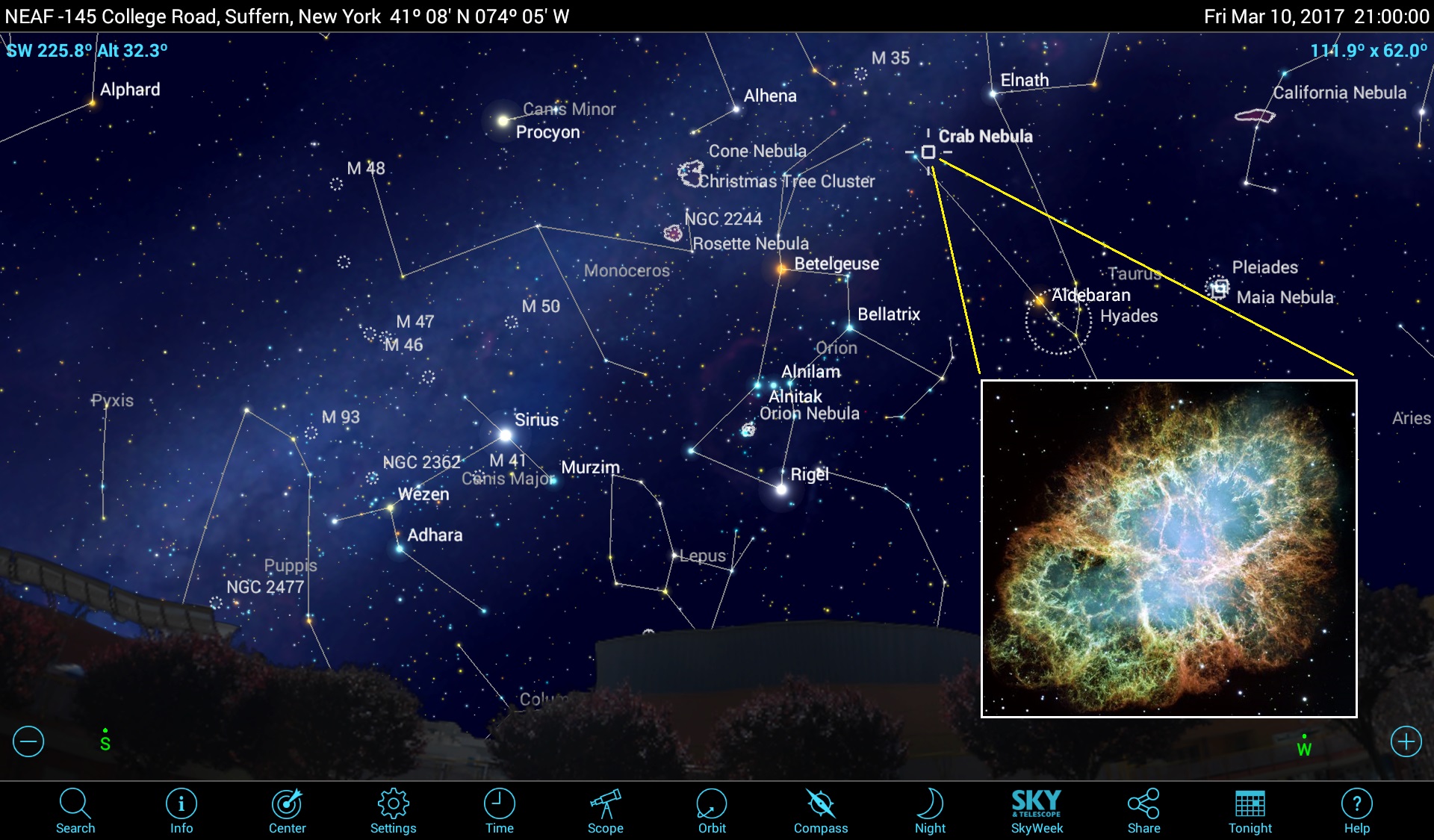
If you spend any time with astronomers, sooner or later, you'll hear them use the phrase "M" something or other — such as "M42" or "M31." They are referencing deep-sky objects from a list that was compiled by French astronomer Charles Messier during the 1770s. Messier was a lifelong comet hunter. On clear, moonless evenings, he swept the dark skies over Paris, looking for their telltale fuzzy smudges.
Unfortunately for him, his searches frequently turned up objects that were comet-like in appearance, but altogether different — nebulas, star clusters and distant galaxies whose true natures were unknown at the time. To avoid being fooled again by these "nuisances," he recorded their appearance and location, and shared the information with fellow comet chasers.
With help from Messier's contemporaries, the list grew into a veritable treasure trove of celestial treats for amateur astronomers. All of them are observable with backyard telescopes and binoculars under dark skies, and quite a few are visible with unaided eyes. In this edition of Mobile Astronomy, we'll focus on the Messier List and how you can see the objects yourself and learn more about them with the help of your favorite astronomy app. We'll even tell you how to spot all 110 of them in a single night! [Messier 47: Blue Stars Sparkle in Spectacular Deep Space Star Cluster]
The origin of the Messier List
Every year, new comets appear in the sky, and they brighten as their gas and dust are released by the warmth of the sun as they enter the inner solar system from the frigid realm beyond Neptune's orbit. They appear as fuzzy, glowing objects that move across the sky against the distant, fixed stars. Discovering a new comet has always been a prestigious honor, and doing so brings fame and accolades from fellow astronomers — not to mention the honor of having one's name immortalized! Canadian astronomer David Levy has discovered almost two dozen comets and continues to search from his home in Arizona. On the other side of the globe, prolific amateur astronomer Terry Lovejoy of Queensland, Australia, has discovered five.
It's becoming harder for amateur astronomers to beat the modern automated comet-hunting telescopes, but that was not so in early days of telescope astronomy. In 1705, Edmond Halley calculated that the bright comet that now bears his name would return around 1758, and the chase was on to be the first person to spot it. Messier was a junior astronomer working at the Marine Observatory at the Hotel de Cluny in Paris. In mid-1757, he began searching for the comet in the areas they were most likely to be the sky. On Jan. 21, 1759, he saw it — but he was second to a German amateur astronomer, who had glimpsed it a few weeks beforehand.
Still, Messier was hooked. He continued searching for comets by sweeping the skies on clear, moonless nights. His 4-inch-aperture (100 mm) telescope was only slightly larger than most beginner telescopes in use today. The sky was still largely uncharted then, except for the prominent stars labeled on the published paper atlases. On Aug. 28, 1758, he spotted a possible comet in the constellation Taurus, but it didn't move from night to night. He decided to catalog these uncharted imposters, starting with this first object, which we now know as the Crab Nebula, or Messier 1.
In 1771, after compiling 45 objects with descriptive notes and coordinates, Messier submitted the list to the French Academy of Sciences, and it was published in 1774. Some objects were contributed by Messier, and the rest were added by his contemporaries Pierre Méchain, Barnabus Oriani and Nicolas Louis de Lacaille. Their final list, published in 1784, contained 103 objects. Between 1947 and 1967, seven more objects were added by astronomers Helen Sawyer Hogg, Owen Gingerich and Kenneth Glyn Jones on the basis that they were mentioned in Messier's notes but that he either forgot them or had planned to add them later.
Breaking space news, the latest updates on rocket launches, skywatching events and more!
Virtually every astronomy sky-charting app will include the 110 objects, referring to them collectively as the Messier List or the Messier Catalog. The objects will be designated by their "M-codes" — M1 through M110 (or Messier 1 through Messier 110). Amateur astronomers refer to the group as the Messiers. Because they are so famous, most of the objects also have proper names, like the Whirlpool Galaxy, the Pleiades and the Beehive Cluster. They run the gamut of deep-sky objects. Let's take a look at what's inside. [Spectacular Photos of Nebulas in Deep Space]
What's in the list?
All but two items in the Messier List are deep-sky objects — a label that covers any celestial object outside our solar system that isn't an individual star or small multiple-star system. Broken down by type, the list contains 40 galaxies, 57 star clusters, nine nebulas, the Crab Nebula supernova remnant, a rich patch of Milky Way stars, a double star and a star grouping. It's not clear why Messier chose to include the last two non-deep-sky objects, why he included some that would never have been confused with a comet or why he left out some other great objects. Let's describe what the object types are and where they typically occur in the sky.
To put things into context, the Milky Way is the band of light that stretches across the night sky. It represents the flattened disk of our home galaxy projected onto the sky. Open clusters are irregular knots containing dozens to thousands of stars that populate the spiral arms that form the plane of our galaxy. In the night sky, most of them are located within or near the Milky Way, and some have nebulosity surrounding them. Globular clusters are spherical collections of up to a million very old stars. These ancient clusters orbit our galaxy's core like swarms of bees, so they are generally located away from the Milky Way.
Nebulas are concentrations of gas in our galactic plane. They come in four types. Emission nebulas are composed of ionized hydrogen gas glowing with a pinkish light triggered by radiation from nearby stars. Reflection nebulasDark nebulas are dense clouds of interstellar dust that obscure the stars beyond them — they look like a hole in space. And planetary nebulas are the spherical corpses of sun-like stars that have ejected their outer shells. The white dwarf star in their center makes the gases glow. These spectacular objects have dim, planet-like disks, and exhibit a variety of colors and internal structures. They can be found anywhere in the sky, but there are more near the plane of the galaxy — where most of the galaxy's stars are.
Distant galaxies are distributed all over the sky, but we cannot observe the ones hidden behind the stars, gas and dust of our own galaxy. As a result, the Messier List galaxies are mainly located away from the plane of the Milky Way. They come in shapes ranging from featureless ellipsoids to flat disks surrounded by well-defined, curving spiral arms. When the galaxy is oriented edge-on to our line of sight (or close to it), all of its light is concentrated into a smaller area of the sky, making it appear brighter. Some galaxies feature dark dust rims that divide them in two. Galaxies that are oriented face-on to Earth are generally much dimmer, but they cover a larger area of sky and are among the most spectacular. [Galactic Evolution: How Galaxies Are Classified by Type (Infographic)]
Messier 1, also called the Crab Nebula, is none of the above. The Crab Nebula, located in the constellation Taurus, is the still-expanding remnant of a massive star that ended its life in a spectacular supernova explosion. The light from the event reached Earth on July 4, 1054, and it was so bright that it could be seen in daylight for many days, and then as a bright nighttime object for several years — all chronicled by Chinese astronomers who observed it at the time. By Messier's era, the object would have been much dimmer and would have looked very comet-like. Now, 250 years later, it has dimmed further and is one of the toughest Messiers to see.
For four of the objects — M47, M48, M91 and M102 — modern astronomers failed to find anything comet-like where Messier indicated. Most of the missing objects have been explained as transcription errors, and the actual objects are located in different areas. Your astronomy app will have the complete corrected set.
Observing Messier objects
On any given evening, at least some of the Messier List objects are observable from mid-northern latitudes. Many of them can be seen with unaided eyes, but magnification aids viewing for all of them. In fact, several of the objects cover too much sky for a telescope's narrow field of view. For these objects, binoculars of any size work best.
Many of the objects are dim, so you'll want to search for them on a moonless night, away from artificial lights. To preserve your eyes' sensitivity to dim light, turn your device's screen brightness to minimum, and enable the red-screen mode in the app. Better still, buy some red film and cut it to cover your device's screen. That way, phone calls or notifications won't pop up with bright white light. Messier 31, also known as the Andromeda Galaxy, is six moon diameters across from our viewpoint on Earth. It's brighter in the center and dims toward the edges. As your eyes adjust to the darkness, you'll see more of it.
Your astronomy app should contain the Messier objects under a separate listing. In addition to the Messier designation, the app will give the proper name and an NGC (New General Catalog) number. The NGC is the master catalog of 7,840 deep-sky objects covering the entire sky.
In the SkySafari 5 app, open the Search menu, and scroll to Messier Objects. The ones currently in the sky are bolded, so use the time control panel to ensure that the app is set to the time you are observing. By default, the display order is by Catalog Number, but I recommend switching to Visual Magnitude, which will bring the easier-to-see objects to the top of the list. If you wish to see where they are in the sky, tap the Settings and enable Highlight Objects. When you exit the Search menu, blue circles will be drawn around every Messier object. You might be surprised by how many there are!
To get you started, here are some Messier objects for each type of deep-sky object. Your app will contain a complete description of each object. Just like the constellations, Messier objects return annually during the same season. Be sure to check the app every now and again to see which new objects are visible during the course of the year.
M1 (Crab Nebula), faint supernova remnant in Taurus; telescope
M13 (Hercules Cluster), bright globular cluster in Hercules; binoculars/telescope
M31 (Andromeda Galaxy), spiral galaxy in Andromeda; naked eye/binoculars
M42 (Orion Nebula), emission/reflection nebula in Orion; binoculars
M45 (The Pleiades), open cluster in Taurus; naked eye/binoculars
M57 (Ring Nebula), planetary nebula in Lyra (rises before midnight); telescope
Take your time to enjoy each object. Take long looks, to tease out details. And remember to breathe — your eyes function better when oxygenated. Many people enjoy sketching the objects with a pencil and paper, or photographing them through the eyepiece. If you gain access to stronger binoculars or a larger telescope in the future, take another look. More details and colors will be revealed. After you come back inside, look at the high-resolution color images available in the app or online, to get a better appreciation for what you saw. If you're hooked on Messiers, there are plenty of free apps devoted to them — the images make terrific home screens!
In his list, Messier included only the objects that he could see from France, and only the ones bright enough for his modest telescope to see. There are dozens of objects seen only from the southern latitudes that certainly would have qualified for inclusion, had he been in the right location to look. In December 1995, English astronomer Sir Patrick Moore published his own list of 109 additional objects called the Caldwell List (his middle name). It encompasses the entire sky, with the objects in numerical order, from the north celestial pole to the south.
By the end of his life, Messier had discovered 15 comets, 12 bearing his name. His comets are long gone, but the objects in his list of "nuisances" are spectacular showpieces for stargazers, and a perfect way for beginners to sample the best of the night sky. Here's hoping you are inspired to take advantage of his efforts and enjoy his legacy for yourself.
Going beyond
As it happens, early spring is the only time of the year when it’s possible to observe every object in the Messier List in a single night from dusk to dawn. Astronomers call this challenge the Messier Marathon. To allow for seeing the fainter objects, pick a moonless evening on, or just before, the new moon (this year it's March 27) and check for clear weather all night. Fuel up with snacks and drinks — you'll be awake all night! Pick a site free from lights with open sightlines. You can use your app to preview where the objects will be at different times through the night. (Here’s a website with some tips.)
First, you'll need to catch the objects that set in the west after sunset, including M77 and M74. Then, you can work your way across the sky from west to east. As you do so, more objects will rise in the east. As dawn starts to break around 6 a.m., the last object, M30, will rise in the east, so it might be difficult to see. Part of the trick is to be organized and efficient. Check this site for a recommended viewing order.
The Messier Marathon is a rite of passage for astronomers, but not everyone is a fan. Astronomy author Stephen James O'Meara likens it to sprinting through the Louvre, glimpsing the paintings. Some skywatchers use computerized GoTo telescopes to make it easier, while a few seasoned pros can find the objects manually! It will likely take you several attempts. I wish you luck!
In a future edition of Mobile Stargazing, we'll dive into the Caldwell List objects. In the meantime, keep looking up!
Editor's note: Chris Vaughan is an astronomy public outreach and education specialist, and operator of the historic 1.88-meter David Dunlap Observatory telescope. You can reach him via email, and follow him on Twitter as @astrogeoguy, as well as on Facebook and Tumblr.
This article was provided by Simulation Curriculum, the leader in space science curriculum solutions and the makers of the SkySafari app for Android and iOS. Follow SkySafari on Twitter @SkySafariAstro. Follow us @Spacedotcom, Facebook and Google+. Original article on Space.com.

Chris Vaughan, aka @astrogeoguy, is an award-winning astronomer and Earth scientist with Astrogeo.ca, based near Toronto, Canada. He is a member of the Royal Astronomical Society of Canada and hosts their Insider's Guide to the Galaxy webcasts on YouTube. An avid visual astronomer, Chris operates the historic 74˝ telescope at the David Dunlap Observatory. He frequently organizes local star parties and solar astronomy sessions, and regularly delivers presentations about astronomy and Earth and planetary science, to students and the public in his Digital Starlab portable planetarium. His weekly Astronomy Skylights blog at www.AstroGeo.ca is enjoyed by readers worldwide. He is a regular contributor to SkyNews magazine, writes the monthly Night Sky Calendar for Space.com in cooperation with Simulation Curriculum, the creators of Starry Night and SkySafari, and content for several popular astronomy apps. His book "110 Things to See with a Telescope", was released in 2021.

